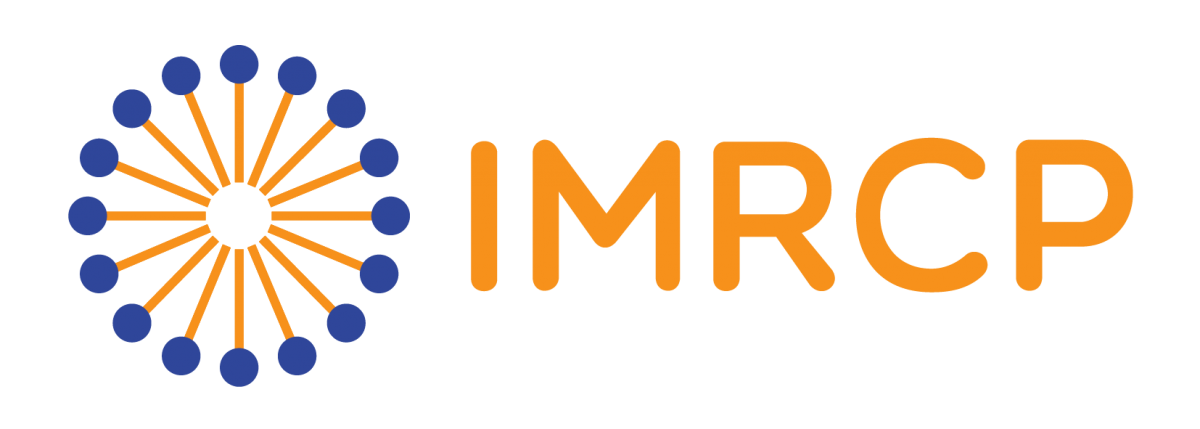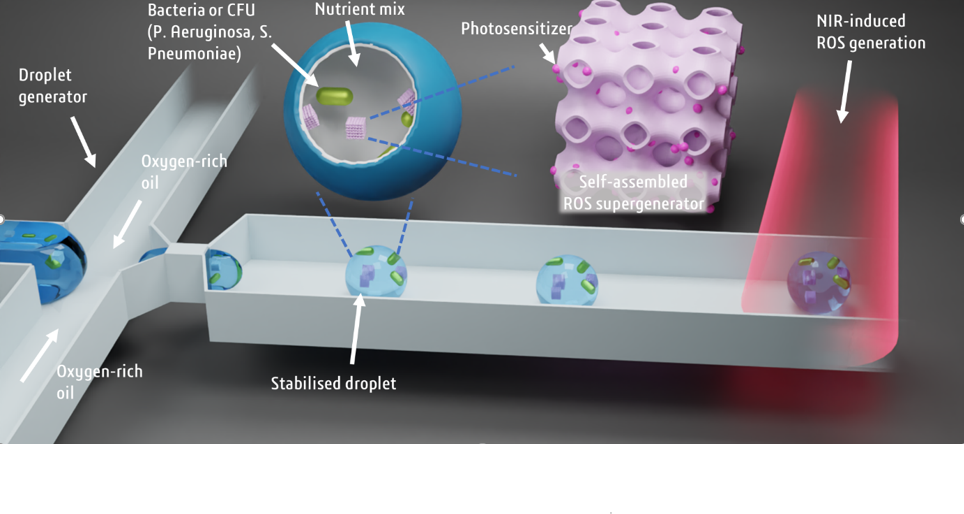DEVELOPMENT OF NANOVECTORS WITH LIGHT-INDUCED ANTIBACTERIAL ACTIVITY
CHEMISTRY & GREEN CHEMISTRY

Lab: IMRCP
Duration: NanoX master Internship (8 months part-time in-lab immersion)
Latest starting date: 15/10/2025
Localisation: Bâtiment 2R1, campus Rangueil, Université de Toulouse
Supervisors:
Clément ROUX clement.roux1@utoulouse.fr
Barbara LONETTI barbara.lonetti@utoulouse.fr
Work package:
The emergence of multidrug-resistant bacteria is a major concern for public health. Exploring antibacterial strategies that have an intrinsically low tendency to elicit resistance is of high interest. In this regard, the field of antibacterial photodynamic therapy (APDT) is in rapid expansion.
APDT is based on the photosensitization of bacteria with exogenous compounds referred to as photosensitizers. Cell death is subsequently triggered by lethal oxidative stress that is induced by irradiation of the infected area with light of a specific wavelength, typically in the visible (400-700 nm) or NIR-I range (700-1000 nm). The oxidative species are generated from energy exchange with the excited photosensitizer.
The advantages of APDT over traditional antibiotics are three-fold: specificity, absence of resistance, multiplicity of the sub-cellular targets.
One difficulty hindering the clinical translation of APDT is the relative inefficiency of many photosensitizers in aqueous media. In this regard, our team has developed several types of nanovectors that can be loaded with hydrophobic photosensitizers (Dionzou, Soft Matter, 2016; Gibot, Cancers, 2020), and we now wish to apply this expertise to antibacterial applications.
1/ Preparation and characterization of nanovectors.
The nanovectors will be cubosomes, which is a family of nanometer-sized (50-500 nm) bicontinuous self-assemblies allowing high cargo loads. (Lonetti, Coll and Surf B, 2022, 10.1016/j.colsurfb.2022.112884). They will be prepared by conventional methods, and a microfluidic method will also be evaluated.
For the generation of reactive oxygen species, upconverting nanoparticles (converting Near infrared input light into visible light) will be used in conjunction with organic photosensitizers such as hypericine, phenothiazine, building upon our recent work on UCNP synthesis (Roux, ACS Nano, 2022, 10.1021/acsnano.2c02423).
This first task will benefit from a large body of preliminary work in the team.
2/ Development of a microfluidic method to evaluate the APDT potential of lipid-based cubic nanovectors.
Resume
The emergence of multidrug-resistant bacteria is a major concern for public health. Exploring antibacterial strategies that have an intrinsically low tendency to elicit resistance is of high interest. In this regard, the field of antibacterial photodynamic therapy (APDT) is in rapid expansion.
APDT is based on the photosensitization of bacteria with exogenous compounds referred to as photosensitizers. Cell death is subsequently triggered by lethal oxidative stress that is induced by irradiation of the infected area with light of a specific wavelength, typically in the visible (400-700 nm) or NIR-I range (700-1000 nm). The oxidative species are generated from energy exchange with the excited photosensitizer.
The advantages of APDT over traditional antibiotics are three-fold: specificity, absence of resistance, multiplicity of the sub-cellular targets.
One difficulty hindering the clinical translation of APDT is the relative inefficiency of many photosensitizers in aqueous media. In this regard, our team has developed several types of nanovectors that can be loaded with hydrophobic photosensitizers (Dionzou, Soft Matter, 2016; Gibot, Cancers, 2020), and we now wish to apply this expertise to antibacterial applications.
1/ Preparation and characterization of nanovectors.
The nanovectors will be cubosomes, which is a family of nanometer-sized (50-500 nm) bicontinuous self-assemblies allowing high cargo loads. (Lonetti, Coll and Surf B, 2022, 10.1016/j.colsurfb.2022.112884). They will be prepared by conventional methods, and a microfluidic method will also be evaluated.
For the generation of reactive oxygen species, upconverting nanoparticles (converting Near infrared input light into visible light) will be used in conjunction with organic photosensitizers such as hypericine, phenothiazine, building upon our recent work on UCNP synthesis (Roux, ACS Nano, 2022, 10.1021/acsnano.2c02423).
This first task will benefit from a large body of preliminary work in the team.
2/ Development of a microfluidic method to evaluate the APDT potential of lipid-based cubic nanovectors.
For decades, the method of choice for assessing antimicrobial antibacterial activity was the agar disk-diffusion assay. It often requires lengthy optimization for support medium composition, cell-seeding density, assay duration. With the development of multi-well plate assays, throughputs were increased and sample volume requirements were decreased. However, these well-based assays are not without disadvantages, such as medium inhomogeneity due to limited mixing and low oxygen levels because of the reduced contact area with surrounding air. On the other hand, microfluidics-based assays offer an attractive alternative for antimicrobial testing: vastly reduced volumes, highly customizable medium composition, extremely high throughputs and exquisite control of environmental conditions. Droplet-based microfluidics for microbiology is a very active research field and several reviews have highlighted their benefits (see for example Kaminski Lab Chip, 2016, 16, 2168). In this project, we will develop a droplet-based microfluidics method. Each droplet can be regarded as a tiny bio-reactor, of which the size, the wall constituents, the composition of the inner phase, the number of microorganisms initially present, and the quantity of antimicrobials agents can be precisely adjusted with minimal effort. Moreover, these parameters can be dynamically tuned, thus leading to a multitude of assay conditions in a very short time.

References:
/
Areas of expertise:
Nanoparticles, photochemistry, antibacterial, microfluidics
Required skills for the internship:
Required: general experimental chemistry. Basic photochemistry.
Optional: light scattering techniques, transmission electron microscopy.
